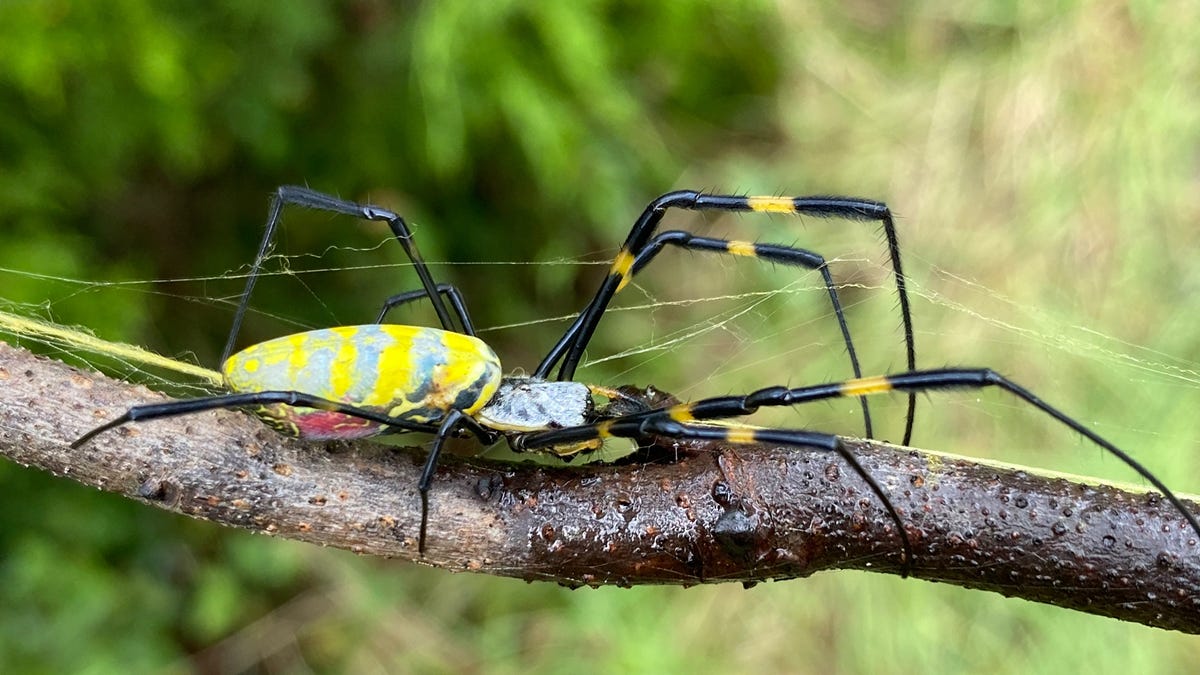Vivid, Invasive Joro Spiders Could Spread in the US, but Don't Panic
There's no need to squish the colorful, palm-size critters, researchers say.
Joro spiders are really pretty gorgeous. They're big and have eye-catching yellow highlights on their bodies. They're from Japan, but they've made themselves at home in the US state of Georgia, where they've been found since 2013. Residents along the East Coast may soon be getting acquainted with them, but there's no need to panic -- or kill the critters.
You might have noticed some alarming headlines that hint at an impending Joropocalypse of parachuting arachnids. Joro spiders are venomous, as are most spiders, but they're not interested in biting people.
Last month, researchers at the University of Georgia at Athens published a study of the invasive Joro spiders in the journal Physiological Entomology. The paper compares the spiders to the imported tropical golden silk spider that's also adapted to life in the US Southeast.
The researchers used nature app iNaturalist to track sightings of Joro spiders in Georgia. They also studied the spiders' cold tolerance and found they could survive brief bouts of freezing temperatures.
A hand gives us a sense of scale for a Joro spider that's eating a caterpillar.
Though Joro spiders and golden silk spiders have a lot of similarities, it seems the Joro spiders are much more likely to spread beyond Georgia thanks to their cold-hardiness, high metabolism and affinity for the climate.
"It looks like the Joros could probably survive throughout most of the Eastern Seaboard here, which is pretty sobering," lead author Andy Davis said in a statement on March 3.
The spiders expand their territory when the hatchlings use balloon-like silk to carry themselves on the wind. Think more like kites and less like paratroopers. They can also hitch rides with unsuspecting humans.
Joro spiders are big enough for their legs to stretch across the palm of a hand and their fancy webs stand out, but they don't seem to be having a negative impact on their adopted home. They're a good form of natural pest control, catching mosquitoes, flies and stink bugs. Davis suggests taking their webs down if they're in the way to encourage them to move.
Residents of states beyond Georgia can keep a lookout for the splashy spiders, but it's fine to just leave them be. "There's really no reason to go around actively squishing them," said study co-author Benjamin Frick. "Humans are at the root of their invasion. Don't blame the Joro spider."


